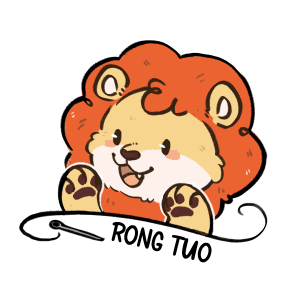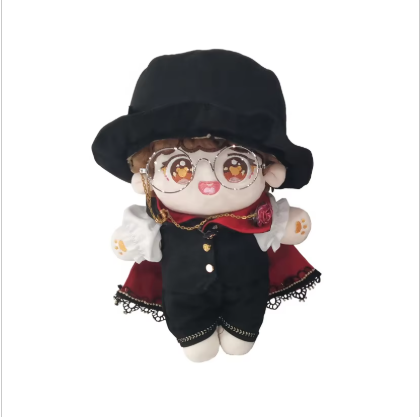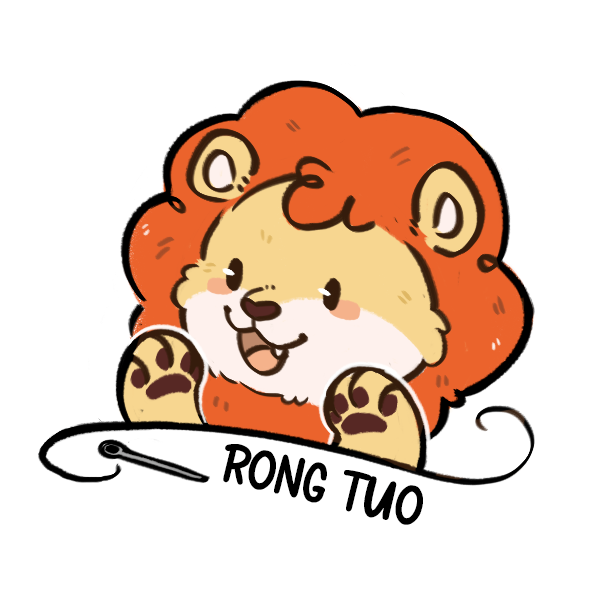עיצוב שלך דמויות כף יד מפוחתות לפי בקשתך
בחירת נושא או דמות
בחירת הנושא הנכון בעת הכנת בובת בד מותאמת אישית עושה את כל ההבדל בתגובה של האנשים אליה. בעלי חיים הם תמיד הימור בטוח כיוון שילדים אוהבים אותם, אך דמויות מצוירות או סיפורים מאיורים גם הם פועלים פלאים במשיכת קהלים בני גילאים שונים. לפני שקובעים את הבחירה, כדאי להקדיש קצת זמן ולחפש מה אחרים עשו בהצלחה. לדבר עם משתמשים פוטנציאליים או לבדוק קהילות מקוונות שבהן דנים בבובות דומות. סקרים יכולים גם להיות מועילים, אם כי לפעמים שיחות פנים-אל-פנים נותנות תובנות טובות יותר למה באמת מושך את תשומת הלב. כל בחירה שנעשה צריכה להתאים למה שהבובה נועדה לעשות. בובות חינוכיות זקוקות לדמויות שתומכות במטרות הלמידה, בעוד שאלו שמיועדות לשימוש בטיפול עשויה להיות להן דרישה לתכונות רכות יותר ול הבעות שקטות יותר. בחירת נכונה יוצרת קשר חזק יותר בין הבובה לאותו אדם שפועלת איתה בהמשך.
תיכנות תכונות העמוק
שרטוטים מפורטים עוזרים מאוד כשמנסים לדמיין איך הבוב הגדול ייראה. הקפידו על פרטים כמו הגודל הרצוי, הצבעים שמתאימים הכי טוב, ופרטי kếtווה שנותנים לבוב אופי משלו. נסו לשרטט צורות שונות, פנים, וסגנונות כלליים עד שמשהו יתאים למה שהבוב צריך להביע. אל תתייאשו ולחווו עם כל מיני עיצובים עד שימצא את זה שמרגיש נכון למה שאנחנו מבקשים. כלים לשרטוט דיגיטליים הם ממש מועילים כאן כיוון שהם מאפשרים לנו לערוך ולשכלל מבלי להתחיל מחדש כל פעם מחדש. ברגע שיש סקיצה טובה בידיים, להראות אותה לאנשים שיבנו את הבוב הופך להיות קל בהרבה מאשר לנסות להסביר הכול במילים.
החלטה על חלקים נעים (פה, זרועות)
כשחושבים על אילו חלקים נעים לכלול בدمית פרווה, יש לבחון דרכים שונות לגרום לדברים לזוז. חלק מהאנשים מתחילים עם חוטים בסיסיים, בעוד אחרים בוחרים במנופים מורכבים יותר. המטרה היא להבין איך בדיוק החלקים הנעים הללו תורמים לסיפור סיפור טוב יותר, ומאפשרים לדמויותปฏ interact באופן טבעי יותר, מאחר שהאלמנטים האלה הם אלו שמעניקים לדמות האנושית חיים בזמן ההצגה. כדאי להביט בدمיות קיימות כדי לראות מה עובד ומה לא, ולצטת רעיונות. חשוב לשקול למה דווקא מישהו ירצה שהدمיה שלו תזוז בדרך מסוימת, בהתאם לכך אם הוא יוצר משהו ללימוד ילדים, להצגת תיאטרון, או סתם לצחוק. כשזה נעשה כראוי, הדמות תמשוך תשומת לב ותעבוד כמו שצריך ללא קשר לסיפור שמת рассказ.
חומרים חומרים וכלים חיוניים
סוגי בד לדמויות עטוף בפוך
בחירת הבד חשובה מאוד כשמakers those soft hand puppets that kids love so much. Most folks go with either fleece, felt, or regular plush material. Fleece feels super soft against little hands, which makes it great for characters meant to be cuddled. Felt works well too because it cuts easily and holds shape nicely during sewing. Then there's plush fabric that just screams luxury with its thick pile. But don't forget about how easy these materials are to clean after inevitable messes. Some fabrics need gentle washing while others can handle machine cycles without complaint. Experienced puppet crafters often suggest looking for anti-pilling options since nothing ruins a puppet faster than those annoying little balls forming on the surface after repeated use.
אפשרויות מילוי לעמידות
בחירת החומר המתאים למילוי היא מה שקובע ביצירת בובת בד שממלאת את המטרתה. ברוב המקרים בוחרים למילוי סיב פוליאסטר, פס הכותנה או ספוג. כל חומר כזה משפיע על המשקל, הנוחות בשימוש והע durability של הבובה. סיב פוליאסטר קל למשוש ונוח למגע עם העור, מה שעושה אותו לבחירה מצוינת לבובות לילדים. ספוג, מצדו, נותן מבנה איתן יותר, ולכן הבובה שומרת על צורתה גם במהלך הופעה. כפי שראיתי בעבודות мастеркласс, חומרים צפופים יותר שומרים על צורתם לאורך זמן. לכן בחירת החומר הנכון היא לא רק עניין של נוחות – זה גם קובע אם הבובה תישאר תראו נחמדה גם לאחר חודשים של שימוש.
לכלים נחוצים (עיניים, אפיים, פעמונים)
כשאתם עובדים על כך שבית בובות יהיה מעניין יותר, בחירת הנוספים הנכונים באמת חשובה. כפתורים פה ושם, עיניים פלסטיקיות קטנות שלא יקרעו, ועוד חתיכות פלץ צבעוניות יכולות לתת לו הרבה יותר אופי. בטיחות היא בהחלט חשובה אם ילדים ישחקו איתה, אז הכל צריך להיות מחובר כראוי מבלי להשתחרר במהלך השימוש. יש אנשים שאפילו דוחפים פעמונים קטנים פנימה או תופרים אותם על חלקים מסוימים כדי שהבובה תעשה רעש בזמן ההופעה. צלילים אלה למעשה עוזרים לספר סיפורים טוב יותר, כי הם מושכים תשומת לב ושומרים על עניין של אנשים במהלך ההופעות. פשוט קח זמן לבחור מה הולך לאן ואיך הדברים מחוברים, ובקרוב כל הצופה ימצא את עצמו נמשך לכל סיפור שהבובה רוצה לשתף.
הרכבה צעד אחר צעד של עוגב יד
חתוך וסewed את הצורה הבסיסית
התחלות בעיצוב בובות ידיים מחייבת תחילה כישורי גזירה טובים. יש לגזור את הצורה הבסיסית בדיוק כדי שכולו יתאים יחד בצורה תקינה. מספריים חדים מאוד הם tuyệtים, אם כי רבים מאוהבי היצירה מאמינים שמכונת גזירה סיבובית מדויקת יותר. לתפר, השתמשו בתפרים בסיסיים כמו קו ישר או שזיף. אלו לא סתם תפרים רגילים - הם באמת מחזקים את החיבורים מבלי להגביל את התחפוכות, דבר שחשוב מאוד כשמופיעים את הפסניכים והתנועות בהומור בהמשך. גם נושא הבטחה חשוב - זכרו שמספריים יכולים לגרום לדימום אם לא מטפלים בהם בזהירות, ודאגו להרחיק את הידיים ממחטים של מכונת התפירה בזמן עבודה. תאונה קטנה יכולה להרוס שעות של עבודה.
הדבקת תכונות פנים בצורה מאובטחת
כשמדובר ביצירת פנים, חשוב מאוד להקפיד על התפירה הנכונה כדי להבטיח שהעיניים והאף לא יתנתקו לאחר שימוש ממושך. רוב האנשים מגלים שהתפירה הקלאסית היא הפתרון הטוב ביותר ברוב המקרים. אפשר לנסות תפירת איקס או תפירת שוליים, תלוי בסוג הבד שממנו בונים. דבק חם יכול להיות פתרון מהיר אם אין זמן, רק צריך להיזהר ולא להשתמש בכל דבק אקרילי רגיל, מכיוון שחלק מהסוגים האלה לא מחזיקים טוב על בד. כשמבילים צעצועי בובות שמיועדים לשימוש של ילדים, מומלץ להוסיף שורה נוספת של תפירה סביב הרכיבים הקטנים כדי למנוע תאונות. ראינו לא מעט מקרים שבהם רכיבים לא תפורים היטב התפרקו במהלך המשחק, ולכן השקעת הדקה הנוספת יכולה להציל בטווח הרחוק מבחינת ביטחון ועמידות.
הוספת מנגנוני פה פונקציונליים
פה תפקידי טוב הוא מה שמכניס את הבובה לחיים עם ביטויים אמיתיים. נסה לבנות לסת בסיסית עם צירים בעזרת בדדים או ליצור משהו חלק יותר עם קפיצים כדי לאפשר תנועות פה שונות. תמיד בדוק את תפקוד הפה לפני שאתה משלים את העבודה. המטרה היא לאפשר טווח תנועה מלא ללא קשיחות או חלקים שאינם מסתדרים כראוי. כשמשהו תקוע או מרגיש מתוח, רוב הבעיות נובעות ממכשורה מוגזמת במקום מסוים או מחלקים שאינם יושבים נכון בחריצים שלהם. כמה התאמות קטנות מספקות פתרון לרוב הבעיות. הקדש זמן לתרגול עם צורות ותנועות שונות של הפה. הגישה המעשית הזו מוסיפה אופי לבובות, מה שעושה אותן מעוררות יותר בהופעות ובאינטראקציות.
אפשרויות ייצור מקצועי
יתרונות של ייצור במפעל
ייצור בובות ב_FACTORY brings ממש יתרונות לייצרנים. פactories יכולים לייצר מאות או אפילו אלפים של בובות זהות, מה שפירושו שחברות אינן נאלצות לדאוג לשונות באיכות בין המוצר למוצר. זה חשוב במיוחד כשממלאים הזמנות גדולות שבהן כל בובה צריכה להיראות ולהרגיש אותו דבר. נתוני תעשייה מראים שבובות המיוצרות בהמונם מקצרות על משך הזמן של ייצורן ונותנות לחברות גמישות רבה יותר מבחינת תמחות. קנייה בכמויות מובילה בדרך כלל למחיר נמוך יותר ליחידה, ולכן שיטה זו מתאימה לחברה שמחפשת לקבל יותר ערך תמורת הכסף מבלי להתפשר על רמות האיכות של קו הבובות שלה.
הסבר על כמויות הזמנה מינימליות
בנוגע לייצור בובות פרווה, כמויות ההזמנה המינימלית או MOQ חשובות מאוד לעסקים קטנים שמנסים להיכנס לשוק. רוב יצרני בובות פרווה לפי ההזמנה דורשים לפחות 300 יחידות לפני שהם בכלל מוכנים לשקול קבלת הזמנה, חברות כמו Plushtoymfg בדרך כלל עוקבות אחר כלל זה. למה הם מגדירים מספרים כל כך גבוהים? ובכן, בעיקר בגלל שנדרש נפח מספק כדי להפוך את תהליך הייצור ליעיל, ועדיין לשמור על איכות טובה. היצרנים צריכים את הסדרות הגדולות כדי להפעיל את המכונות שלהם כראוי ולשמור על תוצאות עקביות בכל הפריטים שמיוצרים. בעלי עסקים קטנים צריכים לדעת על הדרישות האלה של MOQ בשלב מוקדם, כדי שיוכלו לתכנן את התקציב שלהם בצורה טובה יותר ולברר אם הם יכולים לעמוד בכמויות הדרושות מבלי להחריד את תקציבם.
כיצד לשתף פעולה עם ספקי OEM
עבודה עם יצרני ציוד מקורי (OEMs) מחייבת חשיבה מקדימה רצינית אם אנו רוצים שהיחסים עם הספקים הללו יצליחו באמת. בעת חיפוש אחר שותפים אמינים, בדקו כמה זמן הם פעילים בתחום שלהם, קראו מה לקוחות אחרים אומרים באינטרנט, ודאגו לבקש דוגמאות של המוצר לפני כן. לאחר שההתהליך מתחיל, חשוב מאוד לשמור על תקשורת ברורה בין כל הצדדים בנוגע לעיצובים המדויקים שיש לייצר ולמועדים שבהם הם צריכים להיות מוכנים. אף אחד לא רוצה הפתעות במועד מאוחר. להצלחה ארוכת טווח, מומלץ לקבוע ביקורים קבועים שבהם כל צד יוכל לשתף מחשבות בצורה פתוחה. קביעת סטנדרטים מדויקים לביקontrolất איכות לאורך תהליך הייצור תורמת להפעלה חלקה. כל המאמצים הללו משתלמיםavailability במוצר באופן קבוע, מה שמאפשר לעסקים לגדול בצורה יציבה תוך דחיפת גבולות היצירתיות בתחום הבובות המילוליות המותאמות אישית.
טיפים יצירתיים לבידוד מותאם
טכניקות חיתוך אישיות
הוספת רקמה אכן מבליטה בובות, במיוחד כשנותנים להן שמות מיוחדים או עיצובים מותאמים אישית שמקשרים עם הקהל באופן אישי. יוצרי הבובות אוהבים להשתמש בטכניקה הזו כדי להטיח עבודות מפורטות שונות ביצירות שלהם, ומעבדים בובות רגילות למשהו באמת ייחודי. למתחילים, ישנן Plenty of tutorials קלים להסברת הדרך לתפר על חומרים רכים. בחרו תחילה איזה עיצוב נראה טוב, ואז סמנו אותו בעדינות על הבד. הרוב מוצאים שהօפרה ( embroidery hoop ) עוזרת לשמור על הכל מוצק בזמן עבודה על התפרים. בחירת חוטים שקופצים על רקע הצבע הנגדי היא הכי טובה כדי שכולם יוכלו לראות את הפרטים הקטנים בבירור. תצטרכו להקדיש לזה קצת זמן - תרגול הופך את זה למשהו מושלם! אחרי כמה ניסיונות, גם למתחילים ניכר עד כמה הרקמה משנה בובה רגילה למשהו מיוחד שמרגיש ייחודי רק להם.
הכללת מודולים של קול
הוספת מודולי צליל לבובות אכן מועילה להופעה ומעבירה אותה לרמה אחרת, מאחר שהיא מוסיפה שכבה אודיו נוספת שמשלבת את הקהל. קיימות מגוון דרכים שבהן המודולים פועלים - חלקם פועלים בעת לחיצה, אחרים מגיבים לתנועה, מה שעושה אותם מתאימים כמעט לכל סוג של הופעת בובות שאפשר לחשוב עליה. בעת ההתקנה, חשוב לבחור מיקומים שלא ישפיעו על מבנה הבובה. בדרך כלל הכי מומלץ להחביא אותם בתוך גוף הבובה או במקום מוסתר בסמוך לאזור הראש, מה שעוזר להפיק את המירב מהמודולים. לאחר מכן, לאמנים קל יותר להפעיל את הצלילים בדיוק בזמן המתאים במהלך ההצגה. קחו לדוגמה את אותם בעלי חיים מדברים חמודים או את הבובות האינטראקטיביות שמופיעות בסיפורי ילדים באירועים. אלו דוגמאות מושלמות למה שקורה כשהצליל מוטמע בצורה נכונה באמנות הבובות. הסיפורים הופכים מעוררי עניין יותר, הילדים מתחברים ל매ג'יק לגמרי, ובסופו של דבר כולם נהנים יותר.
רעיונותuggestions לאריזה עבור ברנינג
כשזה מגיע לבובות מותאמות אישית, אריזה יצירתית באמת עושה הבדל איך אנשים רואים את המותג ומה הם מרגישים כשהם מקבלים את המוצר בידיים. אריזה היא לא רק נייר עטיפה, היא למעשה חלק מהמותג עצמו, מספרת ללקוחות משהו על מי אנחנו ומה חשוב לנו. להיות ירוקים עם חומרים מתאים למה שרבים קונים אכפת להם בימים אלה ועוזר לנו למקם את המותג שלנו כמי שאכפת לו מהכוכב. קופסאות קרטון שניתן למחזור עובדות מצוין, או שקיות ביולוגיות מיוחדות שמתפרקות באופן טבעי לאחר השימוש. עבור רעיונות עיצוב אמיתיים, חשבו על יצירת אריזה נושא שמספרת סיפור קטן או עטיפות צבעוניות שמושכות את תשומת הלב מיד בחנות. האריזה הטובה ביותר עושה תפקיד כפול להגן על הבובה העדינה תוך כדי פתיחתו גורם לו להרגיש כמו מקבל מתנה. הלקוחות זוכרים חוויה כזו, מה שממשיך להחזיר אותם.
שאלות נפוצות
מהם הנושאים הטובים ביותר לקוקיות ידיים מוצקות מותאמות?
נושאים פופולריים כוללים בעלי חיים, קריקטורות וסיפורי מיתולוגיה. אלו נושאים שמתאימים לציבור רחב ומשפרים את האינטראקציה.
איך אני יכול להתחבר בצורה מאובטחת את ההוספות לקוקית שלי?
השתמש בטכניקות דפיקה כמו דפיקה חלופית הדוקה או דפיקה בסגנון כיסוי כדי לוודא שפריטי תוספת כמו עיניים ואף נשמרים מחוברים בצורה אמינה עם הזמן.
מה חשיבותה של כמות הזמנה מינימלית?
כמויות הזמנה מינימליות מאפשרות ליצרנים לה-optimize את תהליכי הייצור ולבטח איכות-consistent, מה שחשוב מאוד עבור עסקים קטנים שתוכננים את בדציהם והזמנותיהם.


